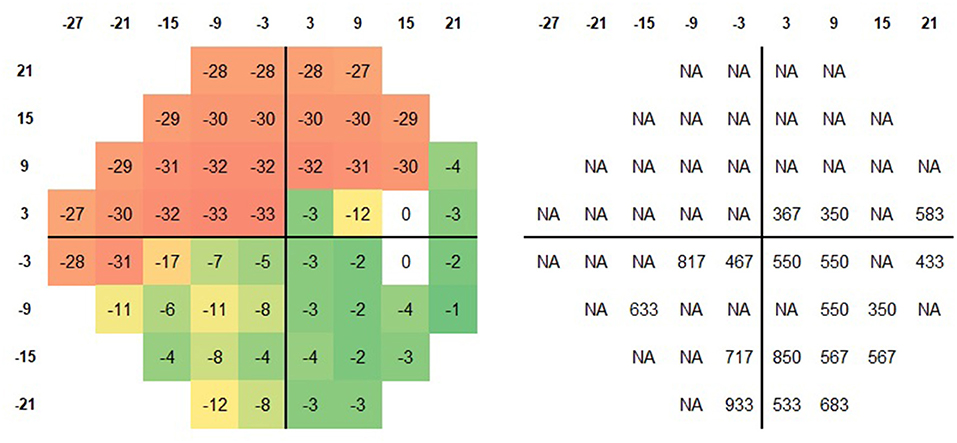
In eye movement perimetry, peripheral stimuli are confirmed by goal-directed eye movements toward the stimulus. The saccadic reaction time (SRT) is regarded as an index of visual field responsiveness, whereas in standard automated perimetry (SAP), the visual field sensitivity is tested. Gijs Thepass, Hans Lemij, Koenraad Vermeer, Johan Pel & Hans Van Der Steen investigated the relation between visual field sensitivity and responsiveness in corresponding locations of the visual field in healthy controls and in patients with mild, moderate and advanced glaucoma.
Thirty-four healthy control subjects and 42 glaucoma patients underwent a 54-point protocol in In eye movement perimetry, (EMP) and a 24-2 SITA standard protocol in a Humphrey Field Analyzer.
The generalized linear mixed model showed that the mean SRT increased with increasing glaucoma severity, from 479 ms in the control eyes to 678 ms in the eyes of patients with advanced glaucoma (p < 0.001). Mean SRTs significantly increased with increasing SAP sensitivity loss. Even at the locations where no sensitivity loss was detected by SAP (total deviation values greater or equal than 0 dB), we found lengthened SRTs in mild, moderate and advanced glaucoma compared to healthy controls (p < 0.05) and in moderate and advanced glaucoma compared to mild glaucoma (p < 0.05).
The lengthened SRT in areas with normal retinal sensitivities in glaucomatous eyes, i.e., planning and execution of saccades to specific locations, precede altered sensory perception as assessed with SAP. Better understanding of altered sensory processing in glaucoma might allow earlier diagnosis of emerging glaucoma.
The full article and publication can be read in Frontiers in medicine.
#ophthalmology #glaucoma #visualfield #neuroscience
